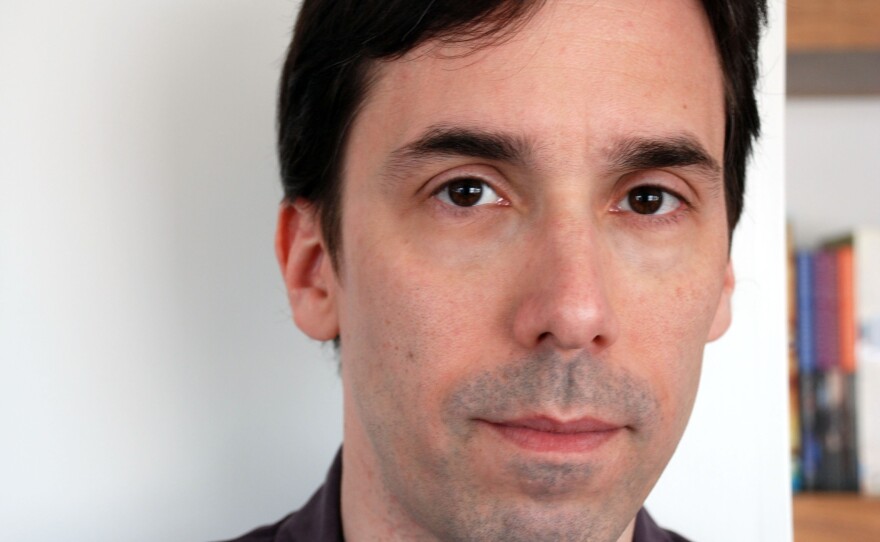Hollywood helped win World War II — and by that, we don't mean John Wayne, but five of the country's most celebrated film directors, who went to work making films for the War Department that showed Americans at war, overseas and in the skies, living, fighting, bleeding and dying. Those films changed America — and deepened the men who made them, including John Ford, William Wyler, John Huston, George Stevens, and Frank Capra.
Author Mark Harris follows the wartime careers of these men in Five Came Back: A Story of Hollywood and the Second World War. He tells NPR's Scott Simon that Huston and Wyler could easily have ducked serving. They both felt a patriotic duty to sign up, but more than that, "it was a new world to conquer ... they did not want to miss out on this adventure."
Interview Highlights
On Wyler's 1944 film The Memphis Belle
Memphis Belle was the first American movie, nonfiction movie, to depict what it was like to go on an airborne bombing run ... it was the story of a single bomber that was crewed by 10 young men, and was on its 25th mission, which was really crucial, because after 25 missions, the guys got to go home and take a break. So if they could pull off this one last mission, they would really be covered in glory — and for American audiences, who saw this movie, this was really a chance for the military to articulate its might in the air to a country that really needed good news about the war in Europe.
On Huston's 1945 film The Battle of San Pietro
San Pietro was seen as a new pinnacle of realism. In some ways, it was, in that John Huston's faked war footage looked more like what we now think of as war footage than anything that Americans had seen. He realized that you needed to had a shaky camera. He knew what a kind of verite style for war footage should look like. But the fact is, it was all faked. He and his crew got to the battle after it was over ... so the movie that became San Pietro was a restaged version of the battle that was shot over the next six weeks.

On the relationship between San Pietro and films like Saving Private Ryan
You know, the first 25 minutes of Saving Private Ryan probably owe more to George Stevens and John Ford, and the actual footage that their men shot at D-Day than to San Pietro. But I do think that San Pietro and the style that Huston helped create in it was enormously influential. And perhaps you can't trace it to Saving Private Ryan, but I think you can trace it down to Oliver Stone's Platoon. And perhaps even The Hurt Locker.
On the difficulty of returning to Hollywood after the war
There might be a sense that [Huston] was rather casual about creating reenactments — but he saw his share of horrors in Italy when he was there, and he did put himself in harm's way. And it's very clear when you read interviews with him at the time, and his own autobiography — which was written decades later — that when he came back to the United States he was suffering from what we would now call post-traumatic stress disorder ... the emotional effect and the traumatic effect on Huston was so powerful that it really, directly influenced his desire to make what turned out to be his final war documentary, Let There Be Light, about emotionally and psychologically injured veterans.
On whether the war changed Hollywood
All of those directors who came back after the war was over came back with a spirit of independence, and a determination not to be slaves to the studio system that had really not been the case before the war. And so did a number of actors. So in a way, Hollywood was changed, because after the war, we started having more movies like The Best Years of Our Lives, with social realism and attention to social issues and problems. Movies got darker to some degree, but also, it was the beginning of the era in which directors became king.
Copyright 2023 NPR. To see more, visit https://www.npr.org. 9(MDAzMjM2NDYzMDEyMzc1Njk5NjAxNzY3OQ001))





